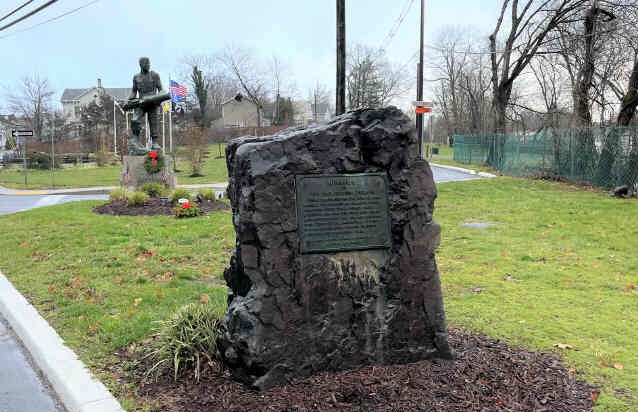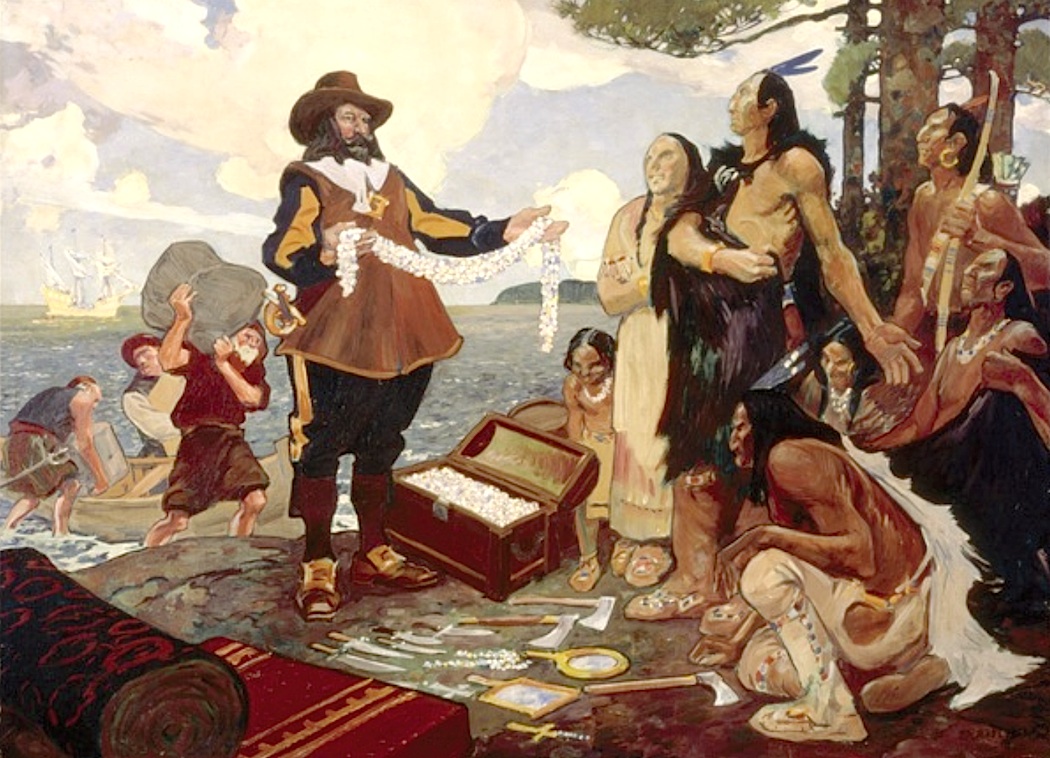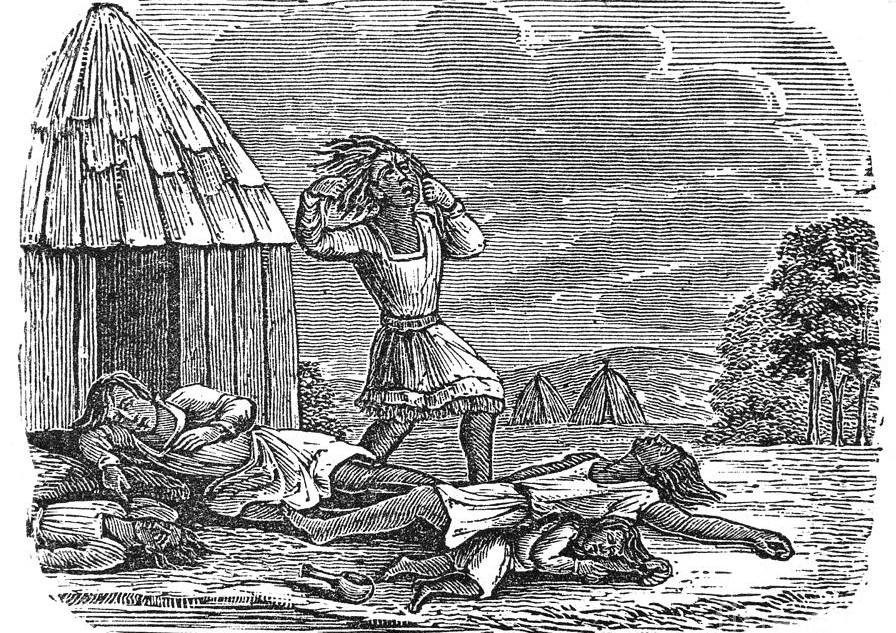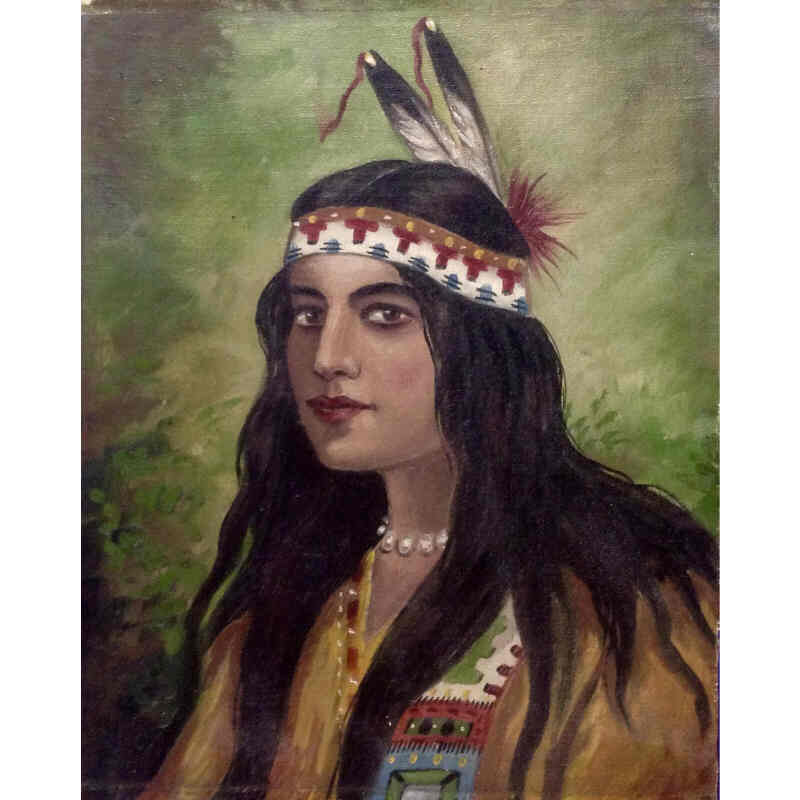
“Memorial to The Naraticong Indians. Whose friendship for the whites, made possible the building of the Old Yorke Road over their trail.”
This author must confess that initially I knew nothing about the plaque nor the local Native Americans (the Indians) to which it is dedicated. But I should have. For I have written 130 articles over 12 years and I have neglected what should have been one of the first topics that I covered. For Raritan was initially settled by the Native Americans. Further, the name “Raritan” is said to be derived from the language of the Native Americans. Even the town logo features a Native American in a canoe.
Better late than never! The following is what I found out about that plaque and the Native Americans who inhabited this area.

The plaque was the brainchild of Emogene Van Sickle. She and her husband had moved to Raritan in 1915 settling in a house on Old York Road/Somerset Street across from where the Basilone Statue is now. A worn-out sign on a tree outside her home that said “Olde York Roade” sparked her curiosity.
Then in 1932, she read an article in “The Saturday Evening Post” that told of the “Swift-Sure Stage Line” which from 1765-1839 ran a coach from Philadelphia to New York over this road. She became determined to find out more about the history of the “Olde York Roade.” She visited libraries, searched through old records, and even visited the still standing taverns that were once stops along the way. This led to publication in serial format in 1936 in the “Hunterdon County Democrat” - a weekly newspaper. In 1937, the series of articles were printed in a book entitled “The Old York Road and its Stage Coach Days”.
After the book was finished, she felt that to honor the Native Americans who first founded the road that there should be a memorial to them. Thus, the idea for the plaque was born.

The Native Americans who once inhabited this area were known as the Lenape. (They have also been called the Naraticongs – thus the name on the plaque.)
They were a loosely connected group of small villages with a similar culture and two similar languages. They called the geographic area that their small villages spanned by the name Lenapehoking. It consisted of all New Jersey, Eastern Pennsylvania, South Eastern New York including Manhattan and Staten Island, and northern Delaware.
Surprisingly the total number of these Native Americans in New Jersey at the time of European contact was only 10,000 and in all of Lenapehoking just 20,000. It is thought that there were 20-30 small villages that each had hundreds of Native Americans. (At that time, in the United States there were one to five million Native Americans. Central America, including Mexico, had five times that amount.)

But the Lenape were no doubt drawn to the Raritan River for water, fishing, and even transportation.

In Snell’s 1881 “History of Somerset County” he refers to four land purchases from the Native Americans. Here many details of the deeds are given. The exact land boundaries are too confusing in their descriptions, but the land sold in these four deeds followed sequentially starting with what is now Bound Brook, and then westward toward Bridgewater, then Raritan and finally North Branch/Branchburg. The southern border of the lots appears to be the Raritan River.
It was the third land purchase going westward that contained the land that is Raritan today. The purchaser was Robert Van Quillen. The two Native Americans who signed the deed were Pawark and Mananaamit. No doubt chiefs of the local Lenape tribes.

It is not recorded what specifically the goods were in this case, but the common goods included in such deals were metal pots, metal tools, guns and gunpowder, as well as alcohol.
At this time, the Lenape would have been able to simply move a bit further west onto land that was comparable in value for farming and hunting. But in the upcoming decades all Native Americans, including the Lenape, would be forced off their lands onto land that was poor for farming and hunting.

Smallpox was the big killer. It is estimated that the Native American population after a century of contact with Europeans was reduced from 50% to 90% (yes 90%) due to death caused by the European diseases.

What is known about the Lenape survives from documentation written by the European missionaries who worked among them. (The Lenape language was only spoken, there was no written version of their language.)
The Lenape farmed extensively - growing corn, squash, and beans. They gathered wild fruits such as strawberries. They also fished and hunted deer and bear. To prepare for winter they dried out the food so it did not spoil over the many winter months. They perfected the trapping of beavers, otters, and other fur bearing animals. They would trade furs with the Europeans for a variety of goods. It was also common for them to travel to other Lenape villages to trade goods.
Their clothes were made of deer and elk hides. Their pottery was made from clay which they obtained from the riverbeds. For housing they lived in domed shaped huts called wigwams that were supported by a series of bent branches and covered in bark.

Their culture was egalitarian. They shared everything. Everyone had worth. If an individual had talent, it was expected that they use it for the common good.
Author Herbert Kraft in his book “The Lenape – Archaeology, History, and Ethnography” concluded the book writing “Lenape life, even with its deficiencies in health care and technology, was immensely satisfying in many ways. Society was family oriented and leisurely. As long as anyone among the Lenape had food to eat, no one would go without food. Orphans were cared for, and the elderly were provided for and respected.”